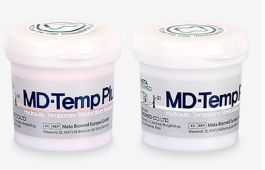Cavity Temporary Filling Guide: Fast Relief

When a tooth cavity strikes, it can be a painful and urgent situation, requiring immediate relief. A cavity, also known as tooth decay, occurs when bacteria in the mouth break down the enamel of the tooth, creating a small hole or pit. If left untreated, the cavity can progress, potentially leading to more severe problems, such as infection or even tooth loss. One effective way to manage the discomfort and prevent further complications is by using a temporary filling. In this comprehensive guide, we will delve into the world of cavity temporary fillings, exploring what they are, how to apply them, and what to expect from the process.
Understanding Temporary Fillings
Temporary fillings, also known as provisional fillings, are designed to provide an immediate, albeit temporary, solution for managing tooth cavity pain and protecting the tooth until a more permanent solution can be applied. These fillings are typically made from a soft, pliable material that can be easily molded to fit the cavity. The materials used for temporary fillings can vary, including over-the-counter (OTC) dental cement, temporary filling material, or even a mixture of oil of cloves and cotton, though the latter is less common and not always recommended due to potential side effects.
Benefits of Temporary Fillings
The primary benefit of a temporary filling is the fast relief it offers from the pain associated with a tooth cavity. By covering the exposed area, temporary fillings can:
- Reduce Sensitivity: Protect the nerve from further irritation by food, liquids, and temperature changes.
- Prevent Further Decay: Act as a barrier to prevent bacteria from entering the cavity and causing more damage.
- Offer Immediate Relief: Provide a quick solution for severe toothache pain, allowing the individual to manage their discomfort until they can see a dentist.
Applying a Temporary Filling
While it’s essential to visit a dentist as soon as possible for a proper filling, applying a temporary filling can be done at home with the right materials. Here’s a basic guide:
- Purchase a Temporary Filling Kit: These kits are available at most pharmacies and include the necessary materials for applying a temporary filling.
- Follow the Instructions: Each kit comes with its own set of instructions. Generally, you’ll need to clean the area around the cavity, dry it, and then apply the filling material according to the kit’s directions.
- Shape the Filling: Use a cotton swab or a similar tool to shape the filling material to fit the cavity neatly.
- Bite Down Gently: To ensure the filling is properly seated, bite down gently on the filled tooth.
Precautions and Limitations
While temporary fillings offer a convenient and immediate solution for cavity pain, they are not a substitute for professional dental care. It’s crucial to understand the limitations and potential risks associated with their use:
- Not a Permanent Solution: Temporary fillings are meant to be just that—temporary. They can fall out and may not prevent further decay if not properly applied or if used for an extended period.
- Potential for Allergic Reactions: Some individuals may have an allergic reaction to the materials used in temporary fillings.
- _delaying Professional Care: Relying on temporary fillings without seeking professional dental care can lead to more severe problems.
When to Seek Professional Help
Temporary fillings are a stop-gap measure and should not replace the need for a proper dental visit. You should seek professional help immediately if:
- The Pain Persists or Increases: Despite applying a temporary filling, if the pain persists or worsens, it indicates the need for more extensive dental care.
- You Notice Signs of Infection: Swelling, redness, or pus around the tooth are signs of infection, which requires immediate medical attention.
- The Temporary Filling Falls Out: If the filling falls out, the tooth is once again exposed and vulnerable to further decay or infection.
Conclusion
Temporary fillings can offer a valuable interim solution for cavity pain, providing fast relief and protection until a dental appointment can be scheduled. However, it’s essential to remember that they are not a permanent fix and should be followed up with a professional dental visit as soon as possible. By understanding the role of temporary fillings, their benefits, and their limitations, individuals can better manage tooth decay and ensure the health and longevity of their teeth.
Frequently Asked Questions
What is the best material for a temporary filling?
+The best material often recommended for temporary fillings is zinc oxide-eugenol (ZOE) cement due to its antimicrobial properties and ability to provide relief from sensitivity. However, it's recommended to use materials from a temporary filling kit specifically designed for this purpose.
How long can I use a temporary filling before seeing a dentist?
+It's recommended to use a temporary filling for as short a period as possible. Ideally, you should see a dentist within 24 to 48 hours of applying a temporary filling. The sooner you can get professional care, the better the chances of preventing further complications.
Can I eat and drink normally with a temporary filling?
+It's advisable to avoid chewing or biting on the filled tooth as much as possible until you can get a permanent filling. Also, try to avoid very hot or cold foods and drinks, as well as sugary or sticky foods, to prevent dislodging the filling or irritating the tooth further.
By taking proactive steps to manage tooth decay with temporary fillings and following up with professional dental care, individuals can ensure the best possible outcomes for their oral health and maintain a healthy, pain-free smile.



